Generative AI vs Conversational AI: What’s Trending in 2025
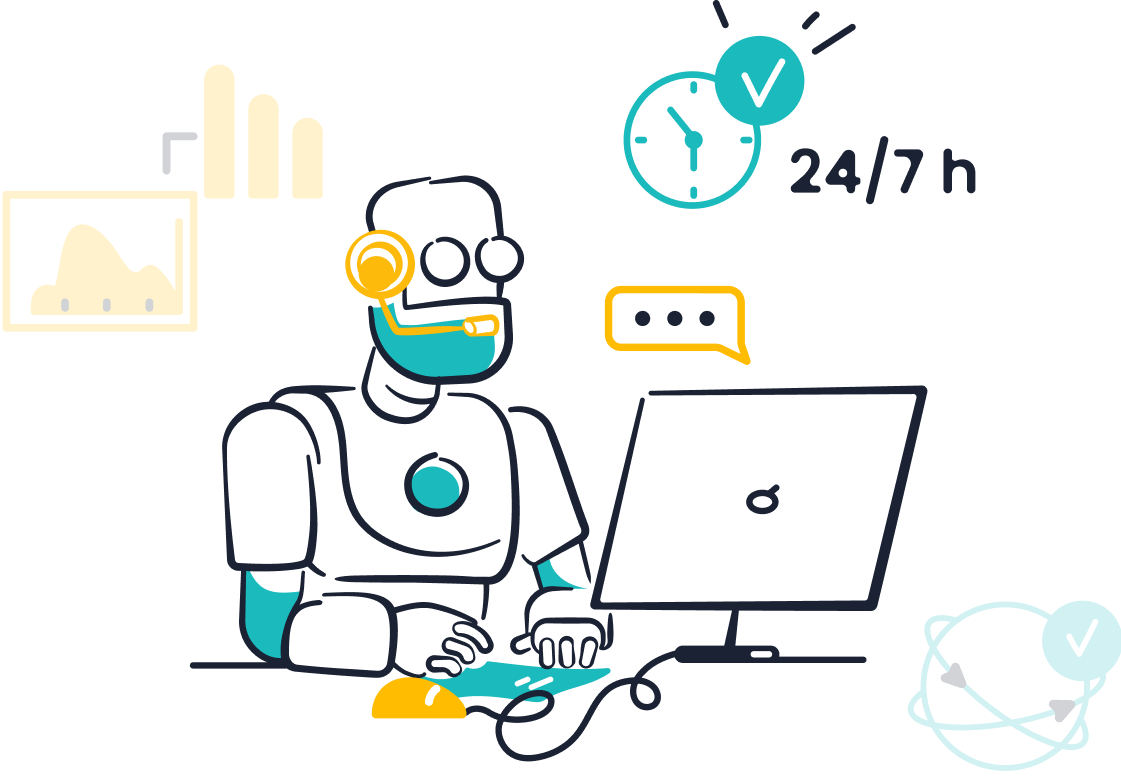
Generative AI creates new content like text, images, and videos by learning patterns from existing data. Conversational AI focuses on enabling machines to communicate naturally with humans through voice or text. Both technologies have revolutionized customer service. By 2025, AI will power 95% of customer interactions, enhancing efficiency and satisfaction. Moreover, 80% of companies plan to adopt AI-powered chatbots, highlighting their growing role in transforming businesses.
Sobot leverages these advancements to deliver seamless customer experiences. Its AI solutions, including the Sobot Chatbot, automate queries, improve productivity, and reduce costs. With tools like these, businesses can stay ahead in the evolving landscape of Generative AI vs Conversational AI vs Predictive AI.
What is Generative AI?

Definition and Core Features of Generative AI
Generative AI refers to a branch of artificial intelligence that creates new content by analyzing patterns in existing data. It uses advanced models like neural networks to generate text, images, videos, and even music. Unlike traditional AI systems that follow predefined rules, generative AI learns from vast datasets to produce creative outputs. For example, tools like ChatGPT and DALL·E can write essays or create artwork based on user prompts.
One of its core features is Natural Language Processing (NLP), which enables machines to understand and generate human-like text. Another key aspect is its ability to synthesize data, making it invaluable for industries like entertainment, marketing, and customer service. Generative AI also excels in personalization, offering tailored solutions based on user preferences.
Generative AI Trends in 2025
Generative AI continues to evolve rapidly, with several trends shaping its future in 2025. Here are some highlights:
| Trend Description | Statistical Evidence |
|---|---|
| Automated code synthesis | Developers using GitHub Copilot completed tasks 55% faster (GitHub, 2022). |
| Intelligent testing frameworks | AI reduces testing time by 31% and improves coverage by 37% (Capgemini, 2023). |
| Synthetic data generation | Market expected to grow from $110M in 2020 to $1.15B by 2027 (Markets and Markets). |
| Personalized software experiences | Amazon’s personalization engine increased purchases by 35% (Amazon, 2023). |
| Cost reduction in product development | Generative AI cuts costs by 25-40% and time-to-market by 30-50% (McKinsey, 2023). |
These trends highlight the growing role of generative AI in improving efficiency and reducing costs across industries. By 2025, the generative AI market is projected to reach $62.72 billion, with a compound annual growth rate (CAGR) of 41.53%.
Applications of Generative AI in Customer Service
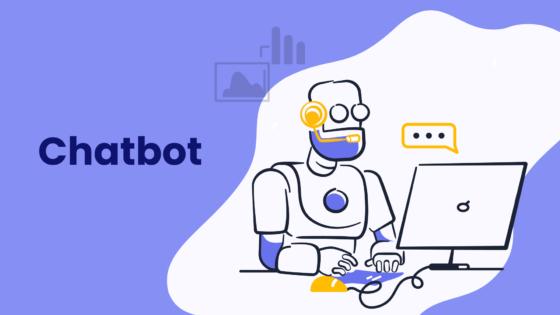
Generative AI is transforming customer service by automating interactions and enhancing user experiences. For instance, AI-powered chatbots like the Sobot Chatbot use NLP to resolve queries instantly, reducing response times and improving satisfaction. Businesses leveraging generative AI report a 14% increase in issues resolved per hour, especially for novice agents.
Sobot’s chatbot integrates generative AI to provide multilingual support, 24/7 availability, and personalized assistance. It also uses AI to optimize knowledge bases, ensuring accurate and consistent responses. This approach not only boosts productivity by 70% but also cuts operational costs by up to 50%.
Generative AI also enables proactive customer engagement. For example, it can analyze user behavior to send tailored recommendations, increasing conversions by 20%. With tools like Sobot, businesses can harness these capabilities to deliver seamless, efficient, and personalized customer experiences.
What is Conversational AI?
Definition and Core Technologies of Conversational AI
Conversational AI refers to systems that enable computers to understand and respond to human language naturally. These systems rely on technologies like Natural Language Processing (NLP), Machine Learning (ML), and speech recognition. NLP helps machines interpret text or speech, while ML allows them to improve responses over time. Speech recognition converts spoken words into text, enabling voice-based interactions.
You encounter conversational AI daily, whether through virtual assistants like Siri or chatbots on e-commerce websites. These systems provide 24/7 support, answering common questions instantly. They also ensure smooth transitions to human agents for complex issues. Businesses use conversational AI to personalize interactions and offer proactive support, reducing customer attrition and improving satisfaction.
Conversational AI Use Cases in 2025
In 2025, conversational AI continues to transform industries with diverse applications:
- Customer Support Chatbots: A telecom company uses voice chatbots to handle billing inquiries, reducing call center volume.
- E-commerce Assistance: Online retailers employ chatbots to guide product searches and manage order inquiries, boosting conversions.
- Banking Services: Financial institutions use chatbots to help customers check balances and transfer money, simplifying financial management.
- Healthcare: Chatbots assist patients with scheduling appointments and medication reminders, easing the workload on healthcare professionals.
- Travel and Hospitality: Airlines use voice chatbots for flight status updates and check-ins, enhancing the travel experience.
These examples highlight how conversational AI improves efficiency and customer satisfaction across sectors. Studies show that 97% of executives report higher user satisfaction, while 94% note increased agent productivity.
Enhancing Customer Interactions with Sobot Chatbot
The Sobot Chatbot takes conversational AI to the next level. It offers multilingual support and operates 24/7, ensuring your customers receive instant assistance. Its intuitive design requires no coding, making it easy for businesses to deploy.
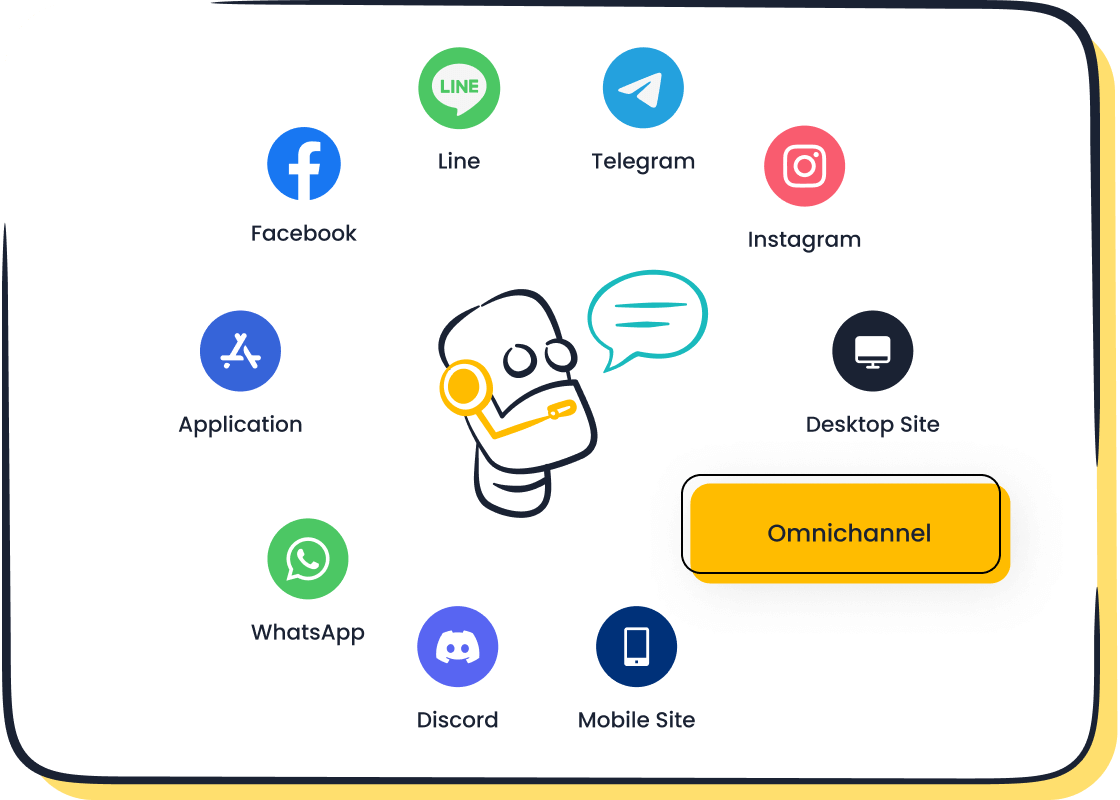
Sobot Chatbot enhances customer interactions by personalizing responses and proactively addressing user needs. It measures metrics like retention rate and goal completion rate to optimize performance. For example, it can analyze user behavior to send tailored recommendations, increasing conversions by 20%. By integrating seamlessly with platforms like WhatsApp and SMS, Sobot ensures consistent support across channels.
With Sobot Chatbot, you can improve productivity by 70% and cut costs by up to 50%. This makes it an invaluable tool for businesses aiming to deliver exceptional customer experiences.
Generative AI vs Conversational AI vs Predictive AI
Functional Differences Between the Three
Understanding the differences between generative AI, conversational AI, and predictive AI helps you identify their unique strengths. Each serves a distinct purpose, powered by different technologies and input-output mechanisms.
| Feature | Generative AI | Conversational AI | Predictive AI |
|---|---|---|---|
| Purpose | Creates new content | Enables natural conversations | Forecasts outcomes |
| Technology | LLMs, GANs, Transformers | NLP, NLU, Dialogue Management | Clustering, Decision Trees, Regression Models |
| Input Type | Prompts, Instructions | Queries, Questions | Historical Data |
| Output Type | Text, Images, Code | Natural conversation | Predictions, Insights |
| Complexity | High (100B-1T parameters) | Medium | Low (dozens to thousands of parameters) |
Generative AI focuses on creating original content, such as text or images, using advanced models like transformers. Conversational AI specializes in enabling machines to interact with humans naturally, relying on NLP and dialogue management. Predictive AI, on the other hand, uses historical data to forecast outcomes, making it essential for predictive analytics in industries like finance and logistics.
Overlapping Use Cases in Customer Service
Despite their differences, these AI types often overlap in customer service, enhancing efficiency and user satisfaction. For example, generative AI can predict customer needs and generate personalized responses, while conversational AI facilitates real-time interactions. Predictive AI analyzes historical data to anticipate customer behavior, enabling proactive support.
| AI Type | Use Case Example | Metrics/Benefits |
|---|---|---|
| Generative AI | Predicting future purchasing needs | Increased sales through personalized recommendations, better customer insights |
| Conversational AI | Resolving support tickets, processing refunds | Improved efficiency, streamlined routine processes |
| Predictive AI | Identifying trends in customer complaints | Reduced churn rates, enhanced customer retention |
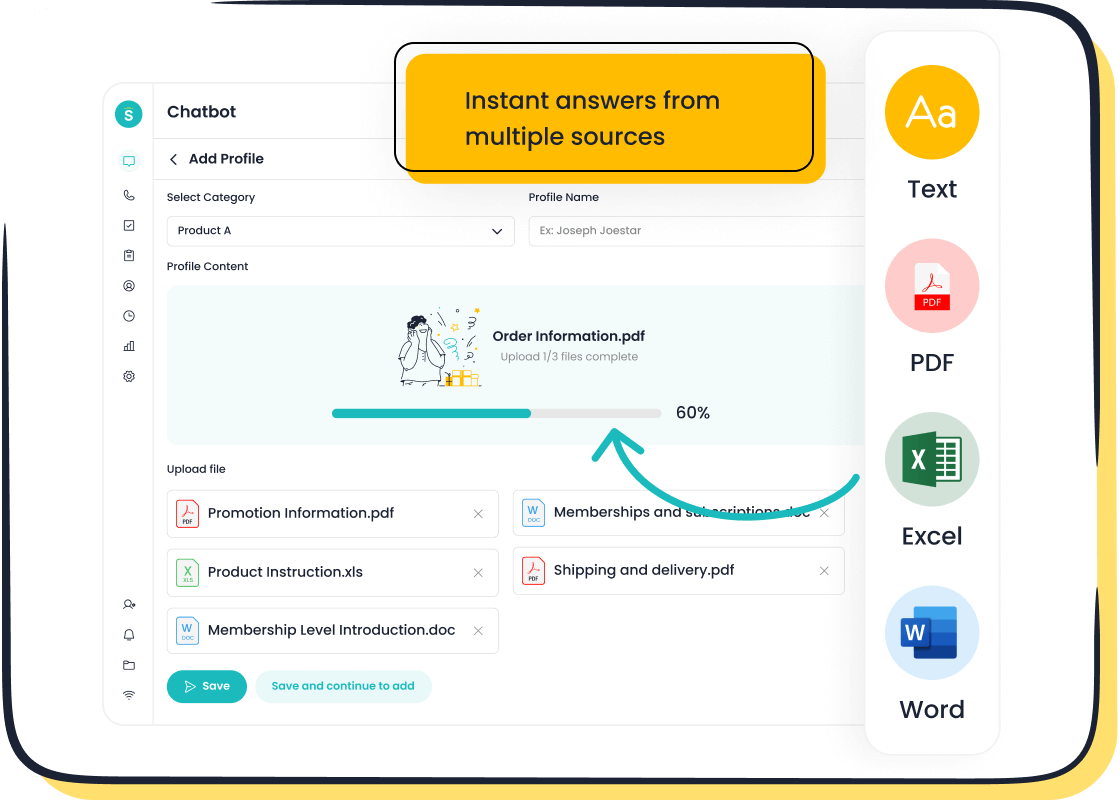
For instance, Sobot’s AI solutions combine these technologies to deliver seamless customer experiences. The Sobot Chatbot uses conversational AI to resolve queries instantly, while generative AI enhances its ability to provide personalized recommendations. Predictive analytics further optimizes customer interactions by identifying trends and improving response strategies.
Industry-Specific Applications and Examples
The applications of these AI types vary across industries, each addressing unique challenges. Generative AI excels in creative fields like marketing, while predictive AI dominates data-driven sectors such as finance. Conversational AI finds its strength in customer-facing roles across industries.
| Industry | Company | AI Application Description | Impact |
|---|---|---|---|
| Retail | Amazon | Uses AI for personalized recommendations based on customer browsing and purchase history. | Improves customer experience, leading to increased sales and customer satisfaction. |
| Finance | JPMorgan Chase | Employs AI for real-time analysis to identify irregularities. | Protects the financial institution and its customers. |
| Logistics | FedEx | Leverages AI for smart package sorting and tracking. | Automates sorting process, ensuring efficient handling of packages. |
| Manufacturing | Siemens | Utilizes AI for predictive maintenance to reduce unplanned downtime. | Lowers maintenance costs and improves operational efficiency. |
| Energy | ExxonMobil | Uses AI for reservoir optimization based on production data insights. | Enhances decision-making, leading to increased resource recovery. |
Sobot’s AI solutions cater to diverse industries, offering tools like the Sobot Chatbot and AI-powered insights. For example, in retail, Sobot helps businesses reduce cart abandonment by 30% through predictive analytics and personalized recommendations. In finance, Sobot’s AI ensures compliance while automating routine tasks, improving operational efficiency.
Trends in Generative AI and Conversational AI for 2025
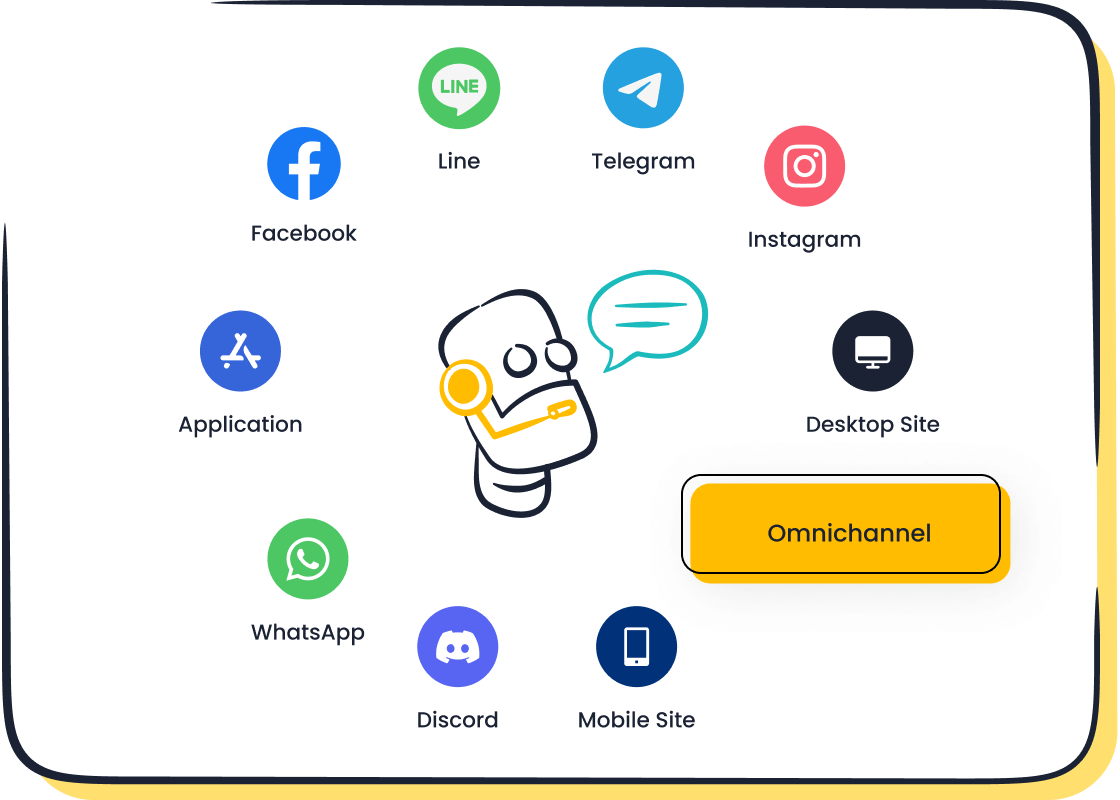
Advancements in Generative AI for Content Creation
Generative AI continues to redefine content creation in 2025, producing outputs that closely mimic human creativity. You’ll notice its impact in areas like storytelling, music composition, and digital art. For instance, AI tools can now craft compelling narratives for marketing campaigns or generate unique artwork tailored to specific audiences. This trend empowers businesses to deliver highly personalized content, enhancing customer engagement across platforms.
One of the most exciting advancements is the ability of generative AI to create synthetic data. This data accelerates product development by simulating real-world scenarios without compromising privacy. Industries like gaming and entertainment benefit significantly, as AI-generated assets reduce production costs and time-to-market. By leveraging these capabilities, companies can stay ahead in competitive markets.
Generative AI also plays a pivotal role in automating repetitive creative tasks. For example, Sobot’s AI solutions integrate generative models to optimize knowledge bases, ensuring accurate and consistent responses. This not only improves efficiency but also enhances the overall customer experience. As these trends evolve, generative AI will continue to bridge the gap between human creativity and machine intelligence.
Innovations in Conversational AI for Customer Experience
Conversational AI has transformed how businesses interact with customers, and 2025 brings even more sophisticated innovations. These advancements focus on improving user interactions through enhanced natural language processing and hyper-personalized experiences. You’ll find that AI-powered tools now adapt to customer behavior in real time, delivering tailored solutions that boost satisfaction.
| Innovation Type | Impact on Customer Experience |
|---|---|
| AI-powered customer service tools | Improve response times and enable omnichannel integration. |
| Hyper-personalized interactions | Tailor interactions based on customer data, enhancing engagement and satisfaction. |
| 24/7 support availability | Provides immediate assistance, reducing wait times and improving satisfaction. |
| Resource optimization | Frees human agents for complex cases, improving efficiency and customer outcomes. |
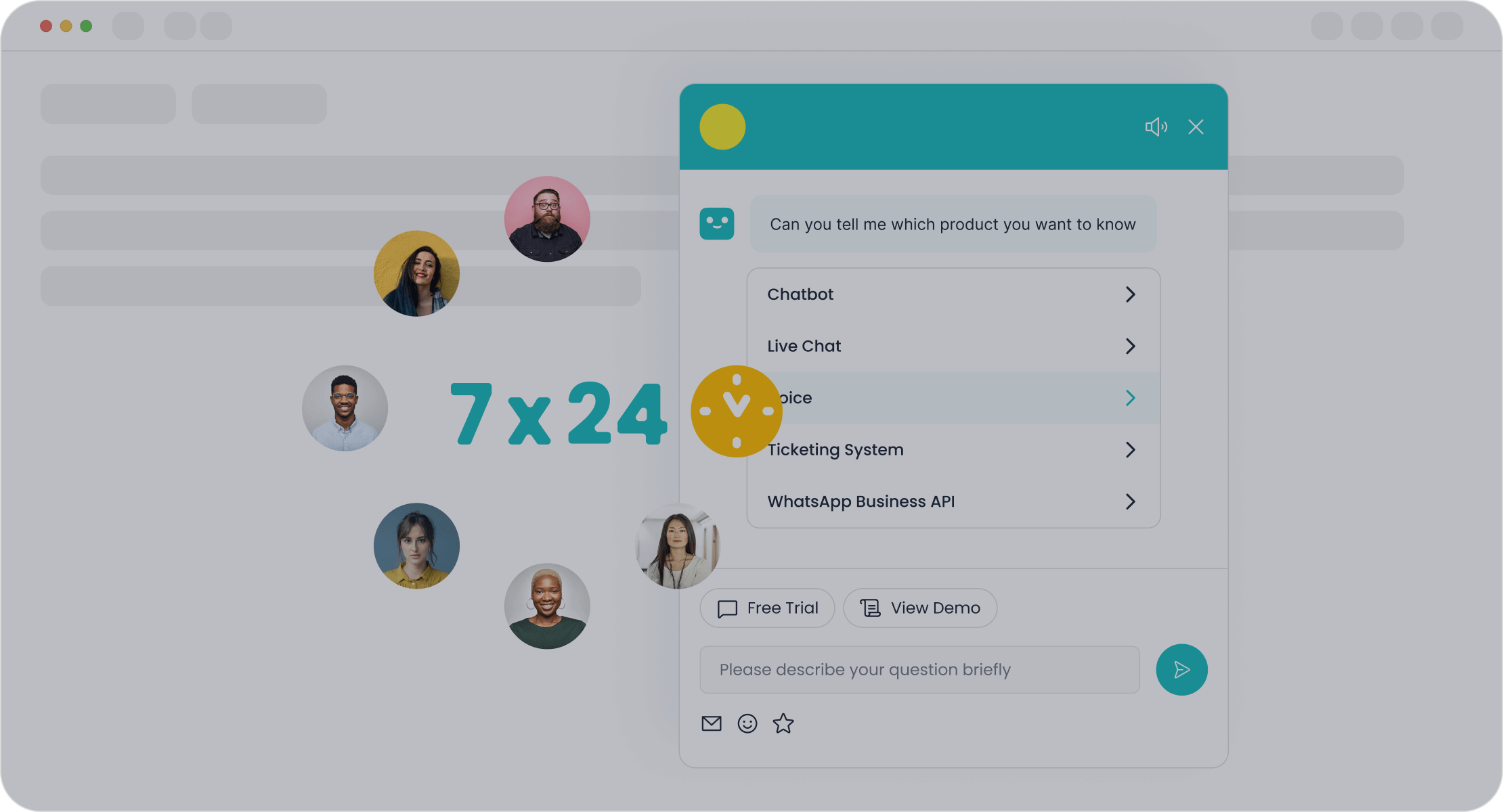
For example, Sobot’s Chatbot leverages conversational AI to provide multilingual, 24/7 support. It ensures seamless communication across channels like WhatsApp and SMS, making it easier for you to connect with customers. By automating routine queries, the chatbot allows human agents to focus on complex issues, improving both efficiency and customer outcomes.
Customers now expect intelligent chatbots that can predict their needs and offer proactive solutions. This shift has strengthened customer relationships and loyalty, as businesses can deliver faster, more accurate support. With conversational AI, you can create meaningful interactions that leave a lasting impression.
Integration of Predictive AI with Generative and Conversational AI
The integration of predictive AI with generative and conversational AI is revolutionizing industries by enhancing productivity and innovation. Predictive AI analyzes historical data to forecast trends, while generative and conversational AI bring creativity and interaction to the table. Together, these technologies create a powerful synergy that drives intelligent applications.
For instance, IBM’s Watson demonstrates the potential of hybrid AI systems. By combining rule-based reasoning with machine learning, Watson analyzes vast amounts of medical literature and patient data to recommend evidence-based treatments. This approach has transformed healthcare, showcasing how predictive AI can complement generative and conversational models.
In customer service, this integration enables businesses to anticipate customer needs and deliver proactive solutions. Sobot’s AI platform exemplifies this by using predictive analytics to identify trends in customer behavior. It then leverages generative AI to craft personalized recommendations and conversational AI to engage users in real time. This holistic approach not only improves customer engagement but also streamlines operations, making it easier for you to achieve your business goals.
The democratization of AI access is another key benefit. With tools like Sobot’s no-code chatbot builder, even individuals without technical expertise can harness the power of these integrated technologies. This accessibility fosters innovation, allowing businesses of all sizes to thrive in an AI-driven world.
Ethical and Regulatory Considerations in AI Adoption
The rapid growth of AI has brought incredible opportunities, but it also raises important ethical and regulatory questions. As you adopt AI technologies, you must consider how to use them responsibly while complying with global standards. These considerations ensure that AI benefits society without causing harm.
Key Ethical Principles in AI
When implementing AI, you should prioritize fairness, transparency, and accountability. Fairness ensures that AI systems treat all users equally, avoiding biases that could harm specific groups. For example, an AI-powered hiring tool must evaluate candidates based on merit, not factors like gender or ethnicity. Transparency involves making AI decisions understandable. If a chatbot denies a refund request, the customer should know why. Accountability means taking responsibility for AI outcomes, whether they succeed or fail.
Regulatory Frameworks You Should Know
Governments and organizations worldwide have established regulations to guide AI adoption. These frameworks protect user rights and promote ethical practices:
- HIPAA: Ensures data privacy and security in healthcare.
- FDA guidelines: Regulate AI-based medical devices to ensure safety.
- GDPR: Protects personal data in the EU, requiring businesses to handle information responsibly.
- Algorithmic bias and fairness: Encourages diverse training data and regular audits to reduce bias.
- Transparency and explainability: Stresses the importance of clear, understandable AI systems to build trust.
For example, if your business operates in Europe, GDPR compliance is essential. It ensures that your AI tools, like chatbots, handle customer data securely and transparently. Sobot’s AI solutions align with these regulations, offering features like data encryption and GDPR compliance to protect your customers.
Challenges in Ethical AI and Governance
Adopting AI responsibly comes with challenges. One major issue is algorithmic bias, which occurs when AI systems favor certain groups over others. This often happens due to unbalanced training data. Regular audits and diverse datasets can help you address this problem. Another challenge is ensuring transparency. Complex AI models, like neural networks, can make decisions that are hard to explain. Using explainable AI tools can help you build trust with your users.
Additionally, you must navigate the balance between innovation and regulation. Overly strict rules can slow down AI development, while lenient policies may lead to misuse. By staying informed about global standards, you can strike the right balance. For instance, Sobot’s AI solutions integrate ethical practices, ensuring compliance without compromising innovation.
Why Ethical AI Matters
Ethical AI adoption isn’t just about following rules—it’s about building trust. Customers are more likely to engage with businesses that prioritize their privacy and security. Studies show that 78% of consumers prefer companies that use AI responsibly. By adopting ethical AI practices, you can enhance your brand reputation and foster long-term customer loyalty.
Sobot’s AI-powered chatbot exemplifies this approach. It operates transparently, providing clear explanations for its actions. Its multilingual support ensures inclusivity, while its compliance with global standards guarantees secure interactions. These features make it a reliable choice for businesses aiming to adopt AI responsibly.
Tip: Regularly review your AI systems to ensure they align with ethical principles and regulatory requirements. This proactive approach can help you avoid potential risks and maintain customer trust.
Impact of AI on Industries and Society
Transforming Customer Service with AI Solutions
AI has revolutionized customer service by automating processes and enhancing real-time interaction. Businesses now resolve queries faster, reduce costs, and improve employee satisfaction. For example, 70% of companies report shorter resolution times, while 65% achieve significant cost reductions. These improvements allow you to focus on delivering better customer interactions.
| Metric | Percentage of Respondents |
|---|---|
| Resolution Time | 70% |
| Cost Reduction | 65% |
| Employee Satisfaction | 65% |
AI-powered tools like Sobot’s Chatbot provide 24/7 support, ensuring no query goes unanswered. The chatbot uses natural language processing to understand customer needs and deliver accurate responses. It also personalizes interactions, boosting engagement and customer satisfaction. By automating repetitive tasks, AI frees up human agents to handle complex issues, improving overall efficiency.
Enhancing User Experience Across Channels
AI enhances user experience by enabling seamless interaction across multiple platforms. You can now engage with businesses through chat, email, voice, or social media without interruptions. This omnichannel approach ensures consistent communication, making it easier for you to get the help you need.
For instance, Sobot’s solutions integrate AI to provide real-time interaction across channels like WhatsApp and SMS. The chatbot adapts to your preferences, offering personalized recommendations that increase engagement. Studies show that 88% of users value automated systems for quick resolutions, which strengthens loyalty and trust.
AI also reduces misinformation by providing accurate and consistent responses. This ensures you receive reliable information, enhancing your overall experience. With tools like Sobot, businesses can deliver tailored solutions that meet your expectations.
Broader Implications for Businesses and Daily Life
AI impacts more than just customer service. It transforms business operations, leadership strategies, and daily life. Companies use AI to optimize resources, improve decision-making, and enhance engagement. For example, financial metrics show cost savings from automation, while operational metrics highlight efficiency gains.
In daily life, AI reduces misinformation by offering accurate insights. It also improves real-time interaction, making tasks like scheduling appointments or managing finances more convenient. Businesses benefit from AI-driven insights that boost engagement and customer interactions. Tools like Sobot’s AI platform help companies achieve these goals by combining predictive, generative, and conversational AI.
Tip: Embrace AI responsibly to maximize its benefits while ensuring ethical practices. This approach builds trust and fosters long-term success.
Sobot’s Role in Shaping the Future of AI-Powered Customer Support

Sobot is at the forefront of transforming customer support with its innovative AI solutions. By integrating advanced technologies like generative and conversational AI, Sobot ensures businesses can deliver exceptional customer experiences. Its AI-powered tools, such as the Sobot Chatbot, automate routine tasks, enhance efficiency, and improve customer satisfaction.
One of Sobot’s standout features is its ability to provide accurate and timely responses. The chatbot achieves a correct answers rate of over 80%, ensuring customers receive reliable information. Additionally, it resolves 85% of problems autonomously, reducing the workload on human agents. These capabilities allow you to focus on more complex customer needs while maintaining high service standards.
| Metric | Value |
|---|---|
| Correct Answers Rate | Over 80% |
| Customer Satisfaction Score | Over 95% |
| Self-answered Questions | 22.2% |
| Problem Resolution Rate | 85% |
| Customer Happiness Rate | 99% |
Sobot’s commitment to customer satisfaction is evident in its performance metrics. The platform boasts a customer satisfaction score of 97% and a customer happiness rate of 99%. These figures highlight its effectiveness in creating positive customer experiences.
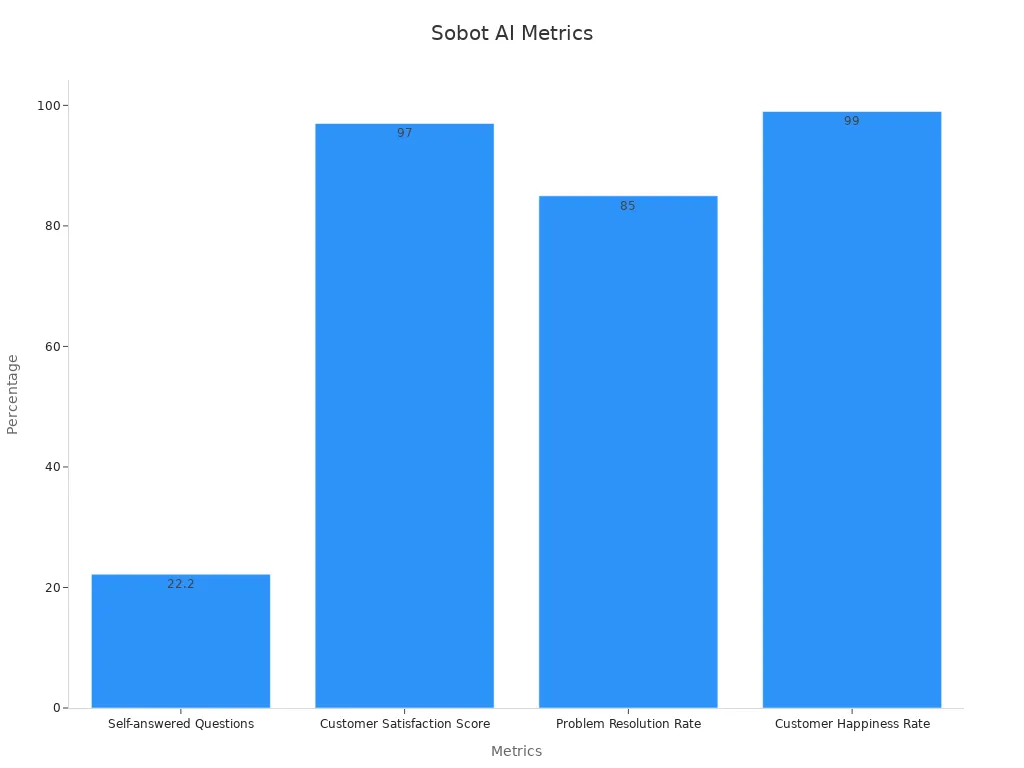
Sobot also excels in omnichannel support, enabling seamless communication across platforms like WhatsApp and SMS. Its multilingual chatbot operates 24/7, ensuring your customers always have access to assistance. By leveraging AI, Sobot helps businesses reduce costs by up to 50% while boosting productivity by 70%.
With Sobot, you can stay ahead in the competitive landscape of AI-powered customer support. Its solutions not only enhance operational efficiency but also foster stronger customer relationships, shaping the future of the industry.
Understanding the differences and overlaps among Generative AI, Conversational AI, and Predictive AI helps you make informed decisions. Generative AI focuses on creating content like art or product designs, while Conversational AI enables natural interactions through chatbots or voice assistants. Predictive AI forecasts outcomes using historical data. These technologies often work together, such as when predictive models identify customer needs, and generative systems create personalized recommendations.
| Feature | LLMs | Generative AI |
|---|---|---|
| Primary Focus | Language-related tasks | Broad creative applications |
| Core Functionality | NLP for human-like text | Pattern recognition |
| Example Applications | Chatbots, translation | Art, music, product designs |
In 2025, AI trends like hyper-personalization and real-time adaptation will dominate. For example, businesses will use AI to predict customer preferences and deliver tailored solutions instantly. Responsible development remains crucial. Generative AI can combat misinformation, but ethical challenges like bias require attention.
To stay competitive, you should adopt tools like Sobot’s AI-powered chatbot. It automates queries, provides multilingual support, and personalizes interactions. By leveraging these solutions, you can enhance customer satisfaction, reduce costs, and align with emerging AI trends.
FAQ
What is the difference between Generative AI and Conversational AI?
Generative AI creates new content like text or images based on patterns in data. Conversational AI enables machines to interact with humans naturally through text or voice. Both improve customer service, but they serve different purposes. Generative AI focuses on creativity, while Conversational AI enhances communication.
How does Sobot’s Chatbot improve efficiency?
Sobot’s Chatbot automates repetitive tasks, reducing the workload for human agents. It operates 24/7, resolving queries instantly and accurately. This boosts productivity by 70% and cuts costs by up to 50%, making it a valuable tool for businesses aiming to enhance operational efficiency.
What are the latest enterprise AI trends in 2025?
Enterprise AI trends include hyper-personalization, real-time adaptation, and the integration of predictive analytics with generative and conversational AI. These advancements help businesses anticipate customer needs, deliver tailored solutions, and improve overall efficiency. Sobot’s AI solutions align with these trends to optimize customer interactions.
Can Sobot’s Chatbot handle multilingual support?
Yes, Sobot’s Chatbot supports multiple languages, ensuring seamless communication with customers worldwide. It adapts to user preferences, providing accurate responses in their preferred language. This feature enhances customer satisfaction and makes Sobot’s Chatbot ideal for global enterprises.
How does AI ensure ethical practices in customer service?
AI ensures ethical practices by prioritizing transparency, fairness, and accountability. For example, Sobot’s AI solutions comply with GDPR regulations, protecting customer data. Regular audits and diverse training datasets reduce bias, ensuring AI systems treat all users equally and responsibly.
See Also
10 Leading Websites Implementing Chatbots This Year
2024's Top 10 Chatbots for Enhancing Websites
10 Essential AI Tools for Enterprise Call Centers